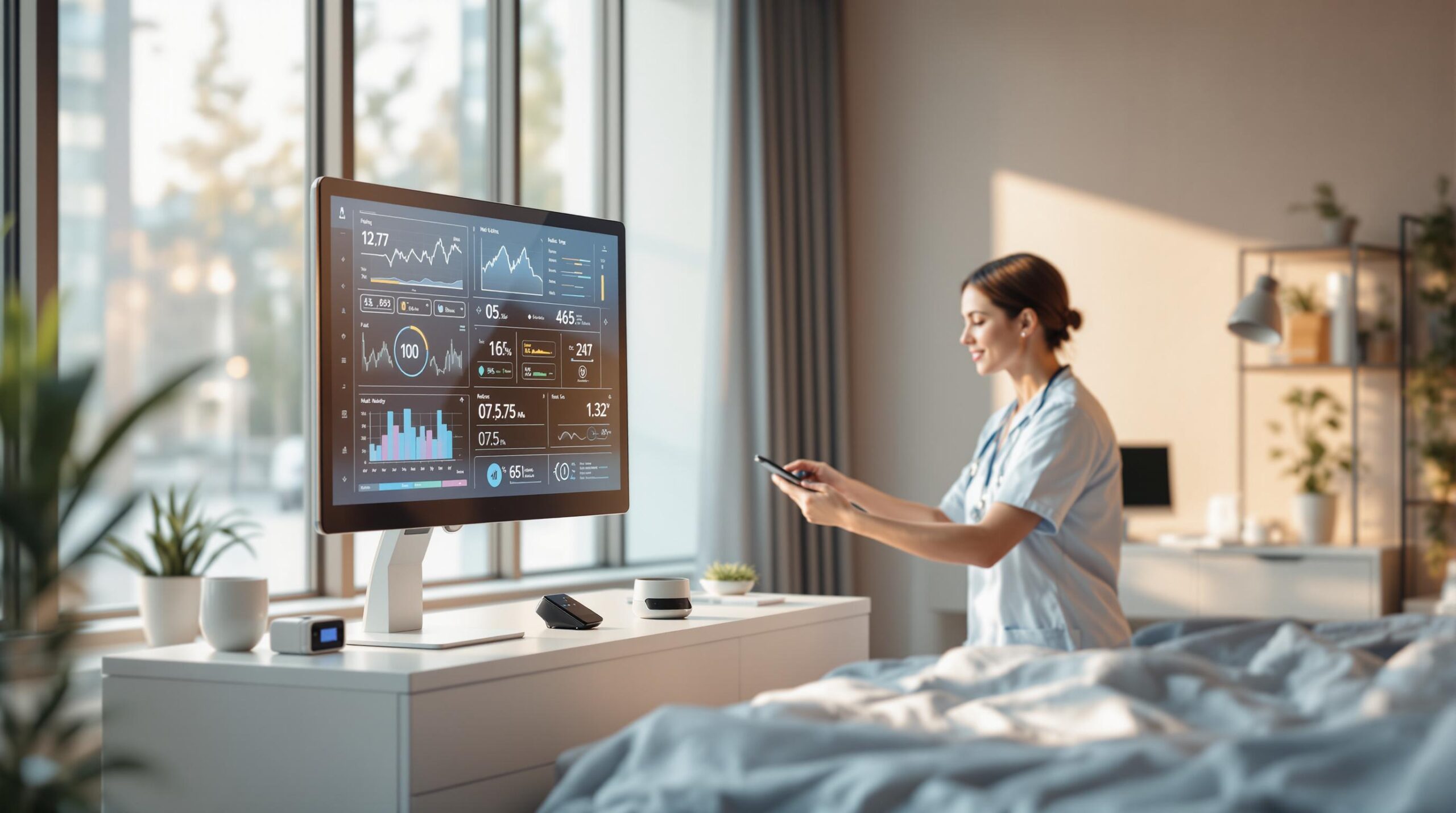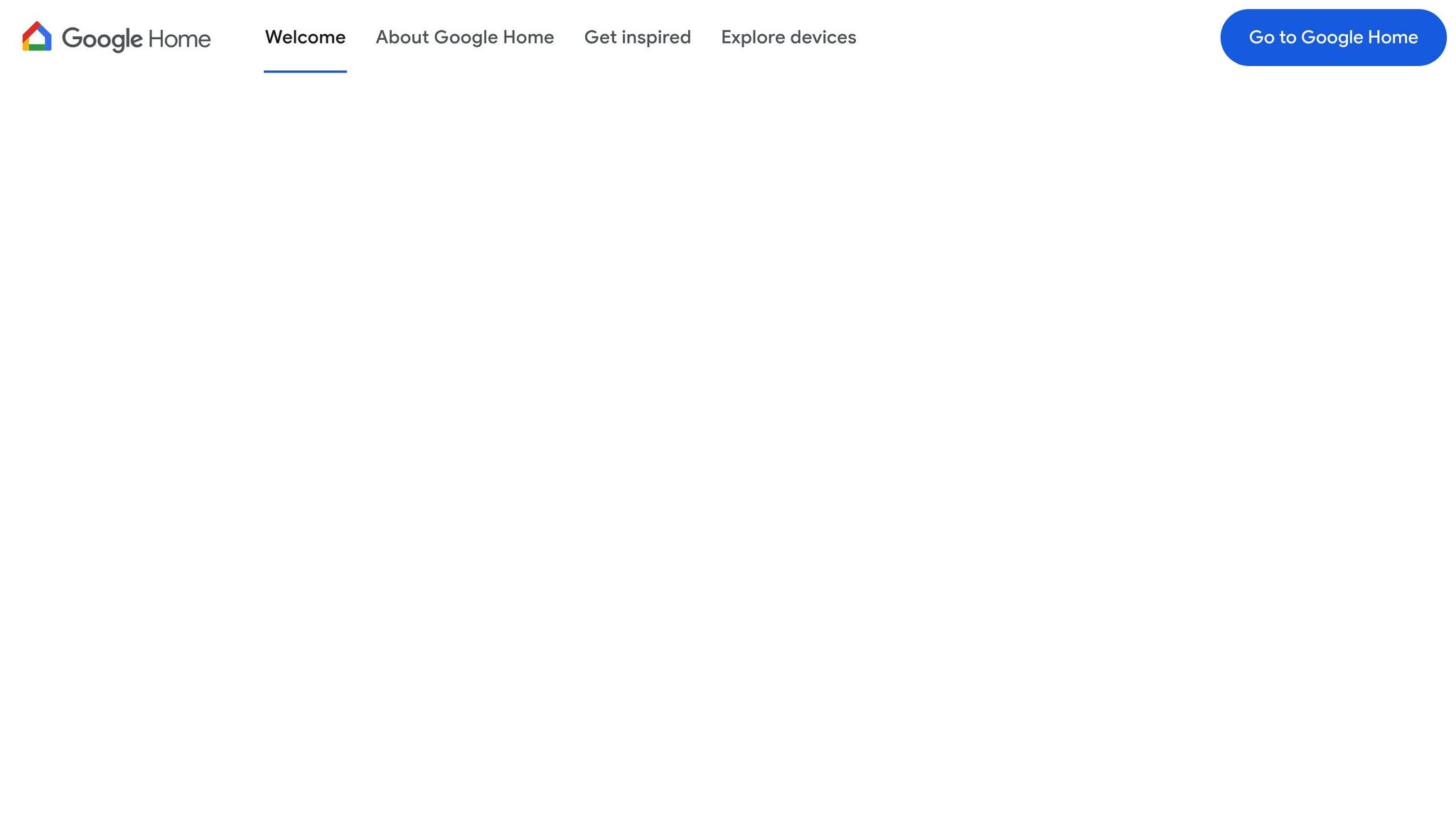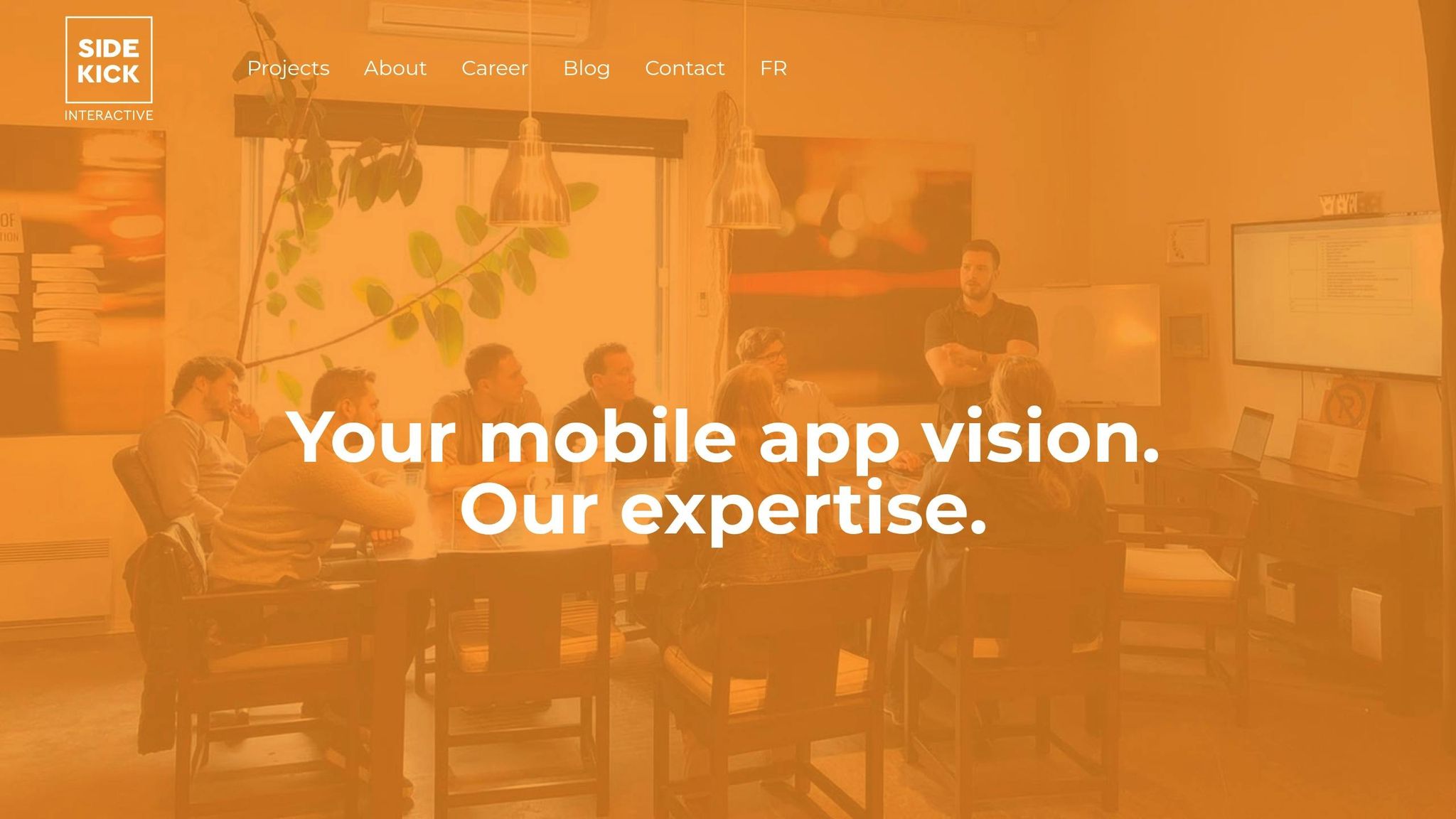
IoT devices are evolving faster than platforms like Google Home and HomeKit can keep up. These mainstream systems work well for basic smart home tasks but struggle with advanced needs like real-time data processing, security, and compliance in areas like healthcare and industrial automation.
Key reasons why IoT devices outgrow these platforms:
- Limited compatibility: Proprietary technologies and incomplete Matter support create integration issues.
- Lack of advanced features: Platforms can’t handle edge computing, custom protocols, or AI-driven tasks.
- Security gaps: Missing features like hardware encryption and compliance with strict regulations (e.g., HIPAA).
- Industry-specific needs: Medical, industrial, and research tools require custom solutions for real-time monitoring, unique protocols, and specialized APIs.
For example, Qualcomm‘s AI-powered refrigerator uses edge AI to suggest recipes and manage shopping lists – tasks beyond standard platforms. Similarly, blockchain secures IoT operations, and 5G with edge computing enables faster, more reliable device communication.
| Platform | Strengths | Limitations |
|---|---|---|
| Google Home/HomeKit | Basic automation, easy setup | No support for advanced AI, edge computing, or custom protocols. |
| Custom Solutions | Tailored to specific needs | Higher complexity and cost but essential for advanced use cases. |
As IoT grows, custom apps and advanced technologies like edge AI, 5G, and blockchain are becoming essential for industries that need more than just basic automation.
Current Limits of Google Home and HomeKit
Device Support Issues
Proprietary technologies and competing standards make it hard for standard IoT platforms to support all devices. While Matter was created to tackle these compatibility problems, it hasn’t fully delivered on its promise of smooth integration. Even devices labeled as Matter-compatible can still lead to inconsistent user experiences. These gaps in compatibility expose the incomplete features of current platforms.
Gaps in Standard Platform Features
Mainstream platforms like Google Home and HomeKit fall short when it comes to offering advanced IoT capabilities. Some of the most noticeable gaps include:
- Data Processing: Many advanced IoT devices rely on data analysis and AI processing that these platforms can’t handle.
- Security: Features like hardware-based encryption and tamper-resistant components are often missing.
- Protocol Support: These platforms don’t support many specialized protocols needed for industrial or medical applications.
"The readiness of IoT devices to interact and interoperate depends as much on the exchange and interpretation of the data they create as it does on their communications capabilities." – IoT Now News & Reports
Unsupported Device Categories
These technical limitations leave certain IoT device categories without proper support, especially those requiring real-time data processing or unique protocols:
| Device Category | Key Requirements | Platform Limitations |
|---|---|---|
| Medical Monitors | Real-time data processing, HIPAA compliance | Limited data handling, weak security protocols |
| Industrial Sensors | Custom protocols, edge computing support | Lacks protocol support, relies on centralized processing |
| Research Equipment | Advanced data analysis, specialized APIs | Basic automation, restricted API options |
This lack of support creates major challenges for enterprise-level IoT deployments. Adi Kabazo, VP Marketing and Alliances at Plasmatic Technologies, points out:
"The long-term success of connected home technology is predicated on overcoming the current market fragmentation and resulting disjointed user experience to provide homeowners with meaningful functionality they can rely on."
As a result, many manufacturers are turning to custom solutions that go beyond the limitations of traditional IoT platforms.
IoT Cases That Need Custom Apps
Medical IoT Systems
Healthcare IoT systems often require features that standard platforms simply don’t provide, such as HIPAA compliance and real-time monitoring. Steve Alder, Editor-in-Chief of The HIPAA Journal, emphasizes:
"Until Google confirms that its voice assistant meets the requirements of HIPAA and includes devices and the voice technology that power them into its BAA, neither Google Home nor Google Assistant are HIPAA compliant and should not be used in a healthcare setting."
Medical IoT devices need specialized capabilities that go far beyond basic automation:
| Requirement | Implementation Need | Development Impact |
|---|---|---|
| HIPAA Compliance | Custom encryption protocols | Ensures patient data is protected |
| Real-time Monitoring | Edge computing integration | Enables immediate responses to conditions |
| System Integration | Custom APIs for EMR systems | Smooth connection with hospital infrastructure |
| Data Privacy | Advanced anonymization | Safeguards sensitive patient information |
Similarly, industries like manufacturing and research also call for tailored solutions to meet their unique operational demands.
Industry and Research Tools
In one example, an OEM developed a custom monitoring system that delivered personalized data views, integrated numerous sensors for real-time equipment tracking, and provided dashboards with actionable insights.
As noted by IoT Now News & Reports:
"Creating a unified strategy for addressing the tangle of IoT ecosystems demands industry actors cooperating to embrace open standards, interoperability standards and consistent development approaches. Unifying the IoT ecosystem is critical to achieving the most valuable outcomes from connected technologies."
Industrial IoT applications face unique challenges that require targeted solutions:
| Challenge | Solution | Business Impact |
|---|---|---|
| Data Volume | Edge processing | Cuts latency and reduces bandwidth usage |
| Security Protocols | Industry-specific encryption | Protects intellectual property |
| Equipment Integration | Custom protocol support | Ensures compatibility with legacy systems |
| Compliance Requirements | Tailored security framework | Meets regulatory standards |
These examples highlight the need for custom IoT apps that address specific industry challenges, from handling massive data flows to ensuring robust security and compliance.
New Tech Pushing IoT Forward
5G and Edge Processing
The combination of 5G and edge computing is driving IoT to new levels. Traditional cloud-based systems often experience delays because data has to travel back and forth between devices and distant data centers. Edge computing solves this by processing data closer to where it’s generated, allowing for real-time decisions. IDC predicts that by 2025, 75% of enterprise data will be processed outside of traditional data centers or cloud environments. This change is crucial for IoT applications that depend on immediate responses and steady connectivity.
"As with edge computing, 5G is essential for next-level IoT connectivity."
By reducing dependency on centralized cloud systems, 5G and edge processing make IoT devices more efficient, even in areas with spotty connectivity. However, as connectivity improves, securing data transactions becomes equally important.
Blockchain IoT Security
Blockchain technology plays a key role in securing IoT operations by decentralizing data control, ensuring data integrity, and reducing risks tied to centralized systems.
"Blockchain is encrypted and secure by design with many independent nodes verifying updates to the chain prior to updates to avoid nefarious actions… This greatly improves access, trust and cost."
In energy systems, smart meters use blockchain to enable peer-to-peer energy trading with secure transaction records. IoT sensors in leased vehicles log critical events using blockchain, supporting usage-based billing that considers factors like torque and load. In supply chain management, blockchain-backed sensor data provides unalterable records, helping businesses meet regulatory standards.
AR/VR IoT Requirements
Emerging immersive technologies like AR and VR are reshaping how IoT is used. These devices require advanced processing capabilities that go beyond standard platforms, opening the door for custom solutions.
For example, AR/VR tools are revolutionizing industrial training by creating realistic, safe simulation environments. AR overlays help technicians troubleshoot issues in real time, improving service efficiency. In real estate, immersive property tours let buyers virtually explore spaces, while interactive design tools allow users to visualize and adjust layouts, speeding up the decision-making process.
These examples highlight how AR and VR are pushing IoT devices to adopt tailored solutions that meet the demands of these advanced technologies.
sbb-itb-7af2948
Building Custom Apps for Modern IoT
Why Choose Native Apps?
Native apps offer features that go beyond what standard platforms can provide. They allow direct hardware access through BLE (Bluetooth Low Energy), simplify device setup using zero-configuration networking, and strengthen security with advanced authentication and OTA (over-the-air) firmware updates. These capabilities are especially important for IoT devices that handle sensitive data or operate in highly regulated industries.
Integrating Advanced Technology
Creating advanced IoT apps means combining complex technologies in a way that’s easy to use. Mobile SDKs play a key role by simplifying these integrations into clear and accessible APIs.
"If a traditional app development company lists IoT as just one of their many mobile capabilities, that should be a warning flag. Doing IoT right takes expertise that only comes with a focus on IoT over an extended period of time." – SpinDance
Examples from different industries highlight how custom IoT solutions can drive innovation. In construction, a company used an industrial IoT system with torque sensors and a mobile app to precisely measure anchor installation depth, improving efficiency. In the automotive world, smart tire technology has paired sensors with mobile apps to deliver real-time tire analytics, creating new business opportunities. These examples show how tailored IoT solutions can address specific needs and challenges.
Sidekick Interactive‘s IoT Expertise
Sidekick Interactive is known for creating secure and high-performing IoT applications that go beyond the capabilities of low-code platforms. Their expertise spans several critical areas:
| Feature | Capability |
|---|---|
| Data Security | Advanced encryption and compliance with strict data protection regulations |
| Integration | Smooth connections with existing systems |
| UI/UX Design | User-friendly interfaces for managing IoT devices |
| Technology Stack | Support for cutting-edge tools like 3D scanning, blockchain, and AR |
Their solutions make even the most complex IoT systems easy to manage and secure. For healthcare, this might involve building remote monitoring systems that handle sensitive patient data securely. In manufacturing, they develop applications that process real-time sensor data and deliver actionable insights.
Sidekick Interactive ensures their apps meet rigorous standards while offering practical functionality. Their work with Bluetooth Mesh technology and EV charging systems showcases their ability to handle sophisticated IoT projects that standard platforms simply can’t support.
5 IoT Requirements & Challenges
Conclusion: Next Steps in IoT
As IoT devices surpass the capabilities of standard platforms, custom development becomes crucial for addressing advanced security, data processing, and integration challenges.
Custom IoT solutions go beyond what standard platforms can offer. They provide real-time data insights and improve operational efficiency, which are particularly important for industries like healthcare and finance that handle sensitive information. These tailored solutions also include advanced security measures to safeguard data effectively.
To prepare for IoT’s future, it’s important to focus on key operational areas:
| Aspect | Strategy | Business Benefits |
|---|---|---|
| Security | Advanced encryption, compliance tools | Protects sensitive data, reduces risks |
| Scalability | Cloud-based and distributed systems | Boosts performance, simplifies growth |
| Integration | Open protocols, standardized platforms | Improves compatibility, lowers costs |
| Management | Centralized systems, OTA updates | Simplifies operations, cuts maintenance |
These strategies are essential for building durable IoT ecosystems. With the limitations of standard platforms in mind, businesses should collaborate with experts who understand both the current challenges and future possibilities. Sidekick Interactive, for example, combines technical skills with deep industry knowledge to deliver IoT solutions that go far beyond basic connectivity, driving real business results.
Future IoT systems need to keep pace with emerging technologies while ensuring security and performance. Custom development with advanced features like granular access controls and efficient communication protocols is the key to meeting unique demands and scaling effectively.



